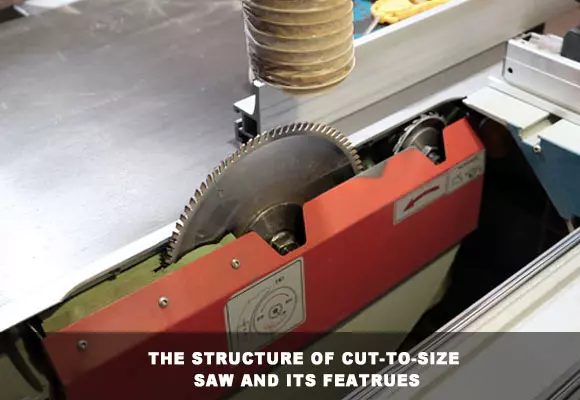
The Structure of A Cut-to-Size Saw and Its Features
When it comes to the tools we used most frequently in woodworking, a cut-to-size saw (also called a sliding table saw) must be on the list. Carpenters often use this kind of machine to cut their wood boards. The structure and features of cut-to-size saws have decided that it has a unique superiority in woodworking.

Structure of a cut-to-size saw
Looking at the cut-to-size saw, you may see a table with one or two circular saw blades. But what you see is just the tip of the iceberg. We may dissect it into several parts: frame, one place for head saw blade, one place for grooving saw blade, transverse guide baffle, fixing bench, sliding table, Oblique saw guide plate, bracket, a display device, and a side guide baffle. So you can see it is actually more complex than you think and see.
Features of a cut-to-size saw
If cut-to-size saws don’t have any priorities, we won’t use them. So we will talk about these features one by one. First, we are going to talk about those circular saw blades on the cut-to-size saw. Carpenters usually use two kinds of blades. The head saw and scribing saw blade. When we start to cut, we often use a scribing saw blade to cut a groove with a depth of 1 ~ 2 mm and a width that is 0.1 ~ 0.2mm thicker than the head saw blade. By doing this, we can the edge of our head saw blade from cracking. Secondly, the sliding table. We use our hands to push the table which is loaded with our workpiece. It sounds heavy and inconvenient. But in fact, due to its special structure of guide rail, the sliding table is easy to be pushed. With a stable and light rack, you can push it smoothly. And due to the sable rack, the cut-to-size saw has high precision.

Cut-to-size saws are used widely in woodworking, but before you use them, you should choose the right saw blade for your cut-to-size saw. TCT saw blade with long service life and high hardness may be what you want. If you have any demands, please contact us directly.